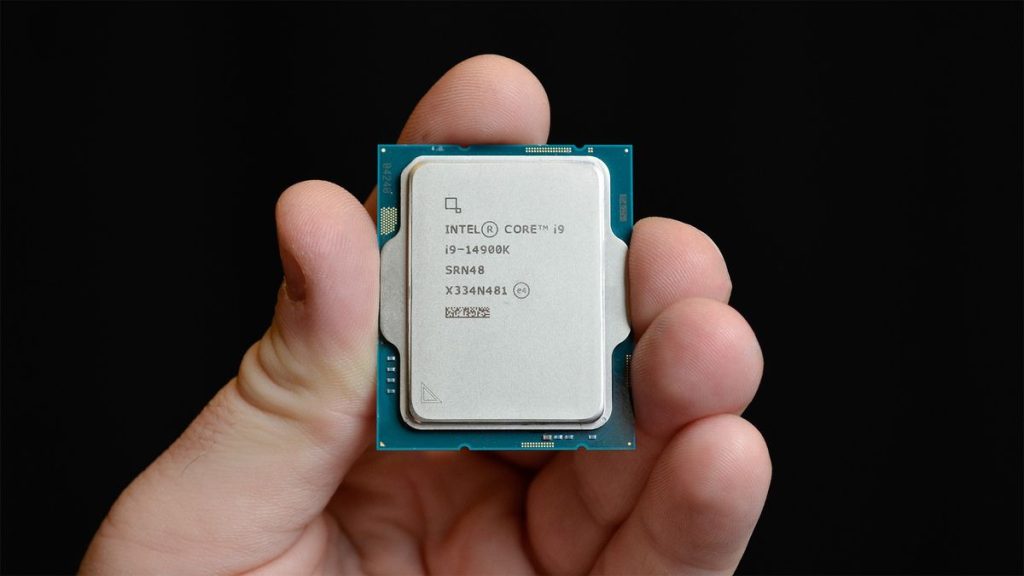Intel’s Panther Lake processors, which are to follow next-gen Arrow Lake – so we’re talking about two generations removed from current Raptor Lake Refresh CPUs – have reached their ‘power on’ milestone.
As announced by Intel CEO, Pat Gelsinger, at Computex 2024, this means that Panther Lake is now officially powered on and the silicon is actually working, although there’s still a long road of development ahead.
However, Gelsinger assured us that Panther Lake processors are on track, showing off a wafer that’s destined to be used for the chips (which are built on Intel’s 18A process).
Panther Lake is scheduled to debut in 2025, likely late next year we’re betting, though there is the possibility it could surface earlier in the second half of the year.
The line-up will feature not just desktop CPUs but mobile processors for laptops, too, and is expected to be a major performance bump, and a big architectural overhaul from Team Blue.
Predictably enough, there’ll be a focus to drive forward with AI, and as we’ve previously reported, next-gen Arrow Lake and Lunar Lake (the latter are power-efficient CPUs for thin-and-light laptops) are aiming to triple AI performance, Intel has asserted, and Panther Lake will double up on top of that progress.
Analysis: It’s all about the IPC
As Wccftech, which spotted this, highlights, Intel has made it very clear that going forward with its processors, the company will be pushing for IPC (Instructions per Clock) gains. That means driving CPU performance with architectural changes, as opposed to ramping up performance with faster clock speeds, which is a more difficult avenue to take (in terms of dealing with the increased power usage this demands).
{ window.reliablePageLoad.then(() => { var componentContainer = document.querySelector(“#slice-container-newsletterForm-articleInbodyContent-ns6gWDVDvYu6apnwFPoKQK”); if (componentContainer) { var data = {“layout”:”inbodyContent”,”header”:”Get daily insight, inspiration and deals in your inbox”,”tagline”:”Sign up for breaking news, reviews, opinion, top tech deals, and more.”,”formFooterText”:”By submitting your information you agree to the Terms & Conditions and Privacy Policy and are aged 16 or over.”,”successMessage”:{“body”:”Thank you for signing up. You will receive a confirmation email shortly.”},”failureMessage”:”There was a problem. Please refresh the page and try again.”,”method”:”POST”,”inputs”:[{“type”:”hidden”,”name”:”NAME”},{“type”:”email”,”name”:”MAIL”,”placeholder”:”Your Email Address”,”required”:true},{“type”:”hidden”,”name”:”NEWSLETTER_CODE”,”value”:”XTR-D”},{“type”:”hidden”,”name”:”LANG”,”value”:”EN”},{“type”:”hidden”,”name”:”SOURCE”,”value”:”60″},{“type”:”hidden”,”name”:”COUNTRY”},{“type”:”checkbox”,”name”:”CONTACT_OTHER_BRANDS”,”label”:{“text”:”Contact me with news and offers from other Future brands”}},{“type”:”checkbox”,”name”:”CONTACT_PARTNERS”,”label”:{“text”:”Receive email from us on behalf of our trusted partners or sponsors”}},{“type”:”submit”,”value”:”Sign me up”,”required”:true}],”endpoint”:”https://newsletter-subscribe.futureplc.com/v2/submission/submit”,”analytics”:[{“analyticsType”:”widgetViewed”}],”ariaLabels”:{}}; var triggerHydrate = function() { window.sliceComponents.newsletterForm.hydrate(data, componentContainer); } if (window.lazyObserveElement) { window.lazyObserveElement(componentContainer, triggerHydrate); } else { triggerHydrate(); } } }).catch(err => console.error(‘%c FTE ‘,’background: #9306F9; color: #ffffff’,’Hydration Script has failed for newsletterForm-articleInbodyContent-ns6gWDVDvYu6apnwFPoKQK Slice’, err)); }).catch(err => console.error(‘%c FTE ‘,’background: #9306F9; color: #ffffff’,’Externals script failed to load’, err)); ]]>
Sign up for breaking news, reviews, opinion, top tech deals, and more.
We’ve seen those power struggles very clearly with the last couple of generations of silicon from Intel, Raptor Lake and its refresh, the latter of which in particular saw Intel rather boxing itself into a corner with power draw. That’s not a problem Intel wants to face again, hence a new focus on revamping architecture, not pushing higher and higher clock speeds to climb to the top of the rankings of the best CPUs.
As Intel tells us: “If you have really high frequency as your model then it takes a lot more time so we have been shifting our time towards the microarchitecture because that’s where you get a lot more power efficiency.
“This is one of our first major steps for Lion Cove which is our CPU here, Skymont E-Core [for Arrow Lake / Lunar Lake], every generation after [Panther Lake onwards] is the same thing, go after IPC, IPC, IPC.”
Which sounds eminently sensible to us, our only real question here being – so Intel has only just figured this out? Now, to be fair, there’s a lot more complexity to CPU roadmaps and chip development plans than meets the eye, no doubt, and clearly Intel ended up down its frequency dead-end for a whole raft of different reasons.
At least the lessons seem to have been learned, and the kind of power-hungry monsters that are the Core i9 chips for Intel’s 13th and 14th-gen CPUs won’t ever be seen again, not if this fresh – and very firm – IPC, IPC, IPC philosophy is stuck to.

